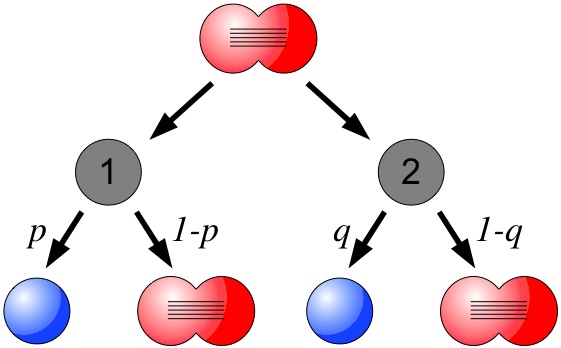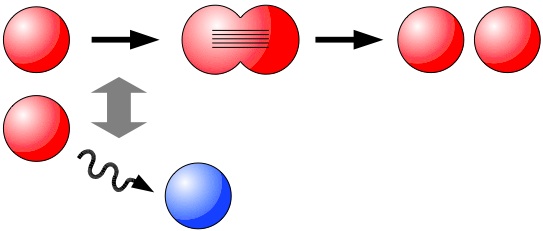|


|
Statistical physics and stem cellsThe maintenance of multicellular tissues imposes severe constraints on the possible modes of cell behaviour, which can leave experimental "signatures" at large length scales, such as spatial and clonal correlations in gene expression across the tissue. Analysing these observations we find universal patterns that persist across very different tissues, pointing at general principles governing cell behaviour. By focusing on universal patterns of cell behaviour, one may generate predictive models without first identifying the detailed intra- and inter-cellular molecular processes. One example of such modelling draws upon stochastic processes, which provide a powerful description of individual cell behaviour within the complex environment of cell tissue. We have analysed the size distributions of families of cells (clones) in mammalian epidermis to infer the cell fate decisions of progenitor cells that maintain the tissue. We found that these cells acquire one of three stochastic "fates", which can be inferred from a scaling signature of the clone size distributions. We are currently applying the same methodologies to the study of stem cell fate in other tissues, such as the intestinal crypt and spermatogenesis.
PublicationsLink to PhD thesis. 1. A single type of progenitor cell maintains normal epidermis, E. Clayton, D.P. Doupé, A.M. Klein, D.J. Winton, B.D. Simons and P.H. Jones, Nature 446, 185 (2007) 2. Kinetics of cell division in epidermal maintenance, A.M. Klein, D.P. Doupé, P.H. Jones, and B.D. Simons, Phys. Rev. E 76, 021910 (2007) 3. Mechanism of epidermal maintenance: Cell division and the voter model, A.M. Klein, D.P. Doupé, P.H. Jones, and B.D. Simons, Phys. Rev. E 77, 031907 (2008) 4. Stochastic fate of p53-mutant epidermal progenitor cells is tilted toward proliferation by UVB during preneoplasia, A.M. Klein D.E. Brash, P.H. Jones and B.D. Simons, Proc Natl Acad Sci USA 107, 270-5 (2009) 5. The ordered architecture of ear epidermis is maintained by progenitor cells with random fate, D.P. Doupe, A.M. Klein, B.D. Simons, and P.H. Jones, Dev. Cell 18, 317-23 (2010) 6. Patterning as a signature of human epidermal stem cell regulation, A.M. Klein, D.P. Doupe, B. Nikolaidou-Neokosmidou, P.H. Jones and B.D. Simons, J. Roy. Soc. Interface (in press, 2011) 7. Mouse germ line stem cells undergo rapid and stochastic turnover, A.M. Klein, T. Nakagawa, R. Ichikawa, S. Yoshida and B.D. Simons, Cell Stem Cell 7, 214-224 (2010) 8. Intestinal stem cell replacement follows a pattern of neutral drift, C. Garcia-Lopez*, A.M. Klein*, B.D. Simons and D.J. Winton, Science (2010) 9. Intestinal homeostasis results from neutral competition between symmetrically dividing Lgr5 cells, H.J. Snippert, L.G. van der Flier, T. Sato, J.H. Van Es, M. van den Born, C. Kroon-Veenboer, N. Barker, A.M. Klein, J. van Rheenen, B.D. Simons and H. Clevers, Cell 143, 134-144 (2010). 10. Glucose and aging control the quiescence period that follows pancreatic beta cell replication, S.J. Salpeter, A.M. Klein, D. Huangfu, J. Grimsby and Y. Dor, Development 137, 3205-3213 (2010) 11. Universal patterns of stem cell fate in cycling adult tissues, A.M. Klein and B.D. Simons, Development (in press, 2011) 12. Cell to cell variability in alternative RNA splicing, Z. Waks, A.M. Klein and P.A. Silver, Mol. Sys. Bio. (in press, 2011) |